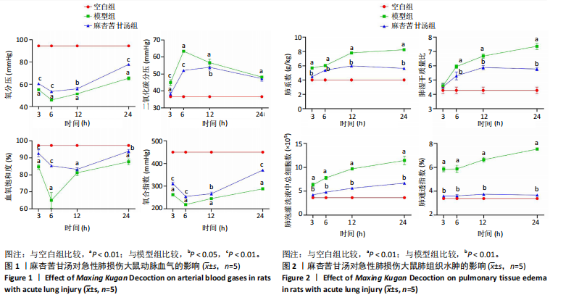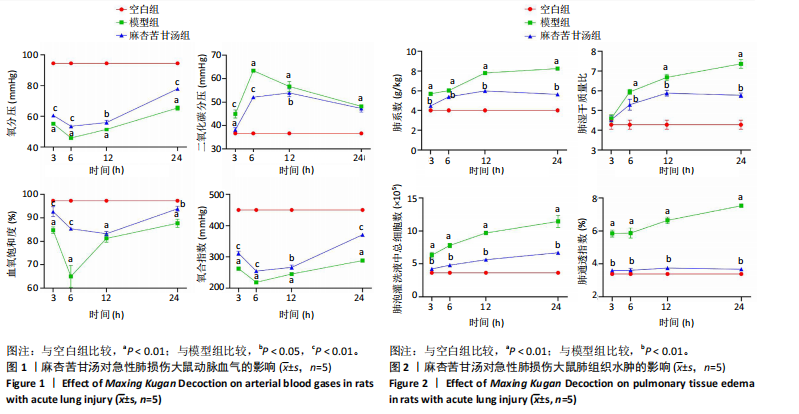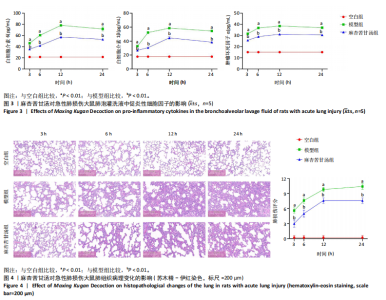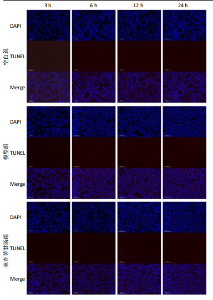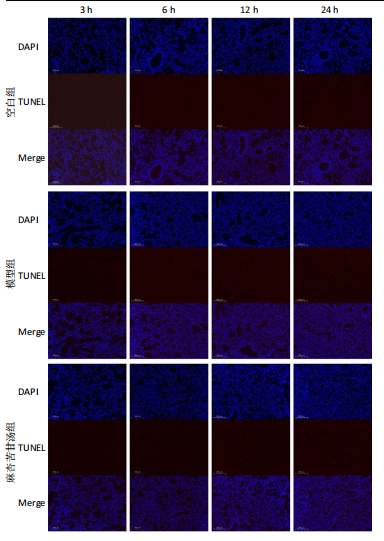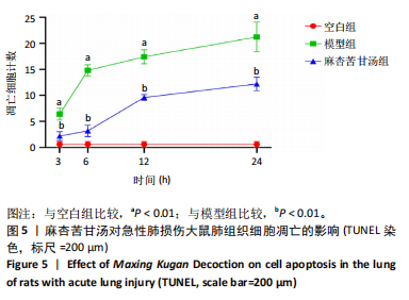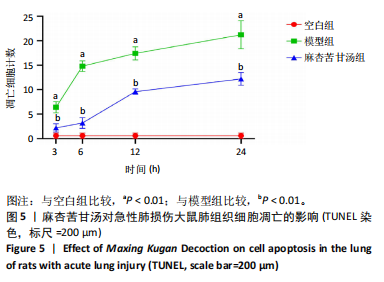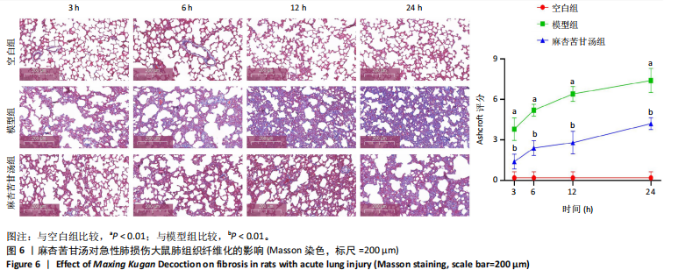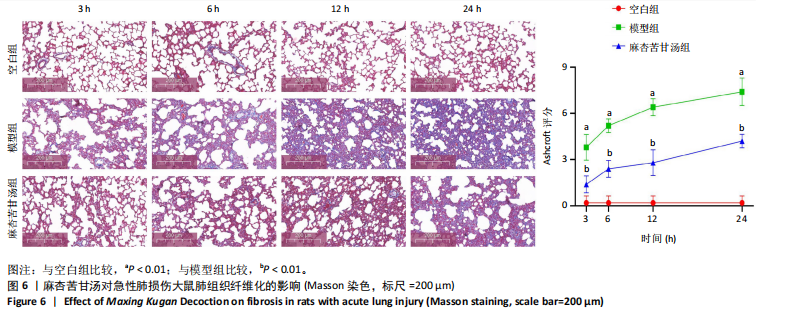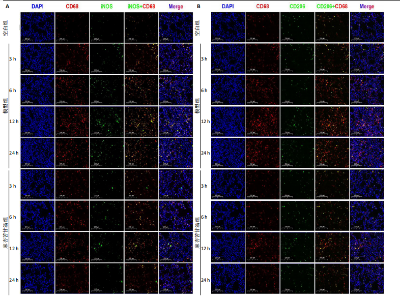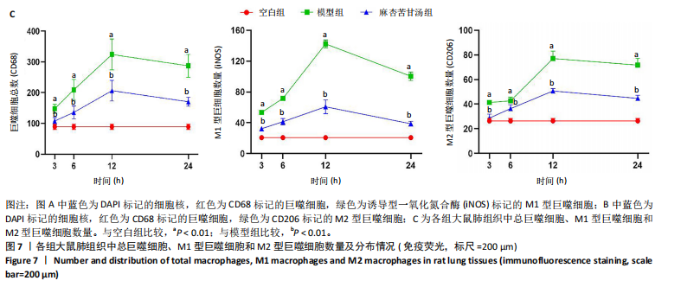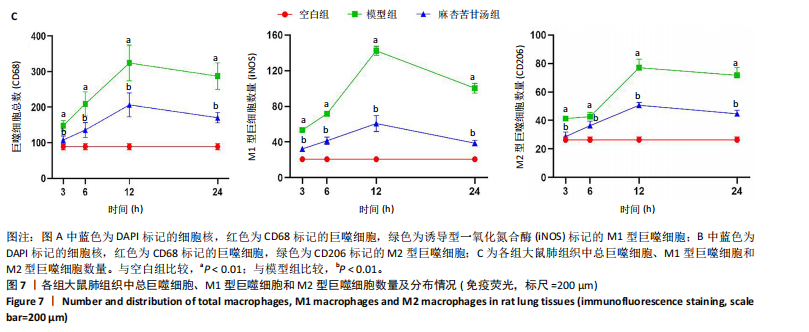[1] MATTHAY MA, ARABI Y, ARROLIGA AC, et al. A New Global Definition of Acute Respiratory Distress Syndrome. Am J Respir Crit Care Med. 2024;209(1):37-47.
[2] VILLAR J, BLANCO J, KACMAREK RM. Current incidence and outcome of the acute respiratory distress syndrome. Curr Opin Crit Care. 2016; 22(1):1-6.
[3] LI L, HUANG Q, WANG DC, et al. Acute lung injury in patients with COVID-19 infection. Clin Transl Med. 2020;10(1):20-27.
[4] MOKRÁ D. Acute lung injury - from pathophysiology to treatment. Physiol Res. 2020;69(Suppl 3):S353-S366.
[5] AN Y, ZHANG H, WANG R, et al. Biomarkers, signaling pathways, and programmed cell death in acute lung injury and its treatment with Traditional Chinese Medicine: a narrative review. Eur Rev Med Pharmacol Sci. 2023;27(21):10157-10170.
[6] HE YQ, ZHOU CC, YU LY, et al. Natural product derived phytochemicals in managing acute lung injury by multiple mechanisms. Pharmacol Res. 2021;163:105224.
[7] CHENG H, WANG X, YAO J, et al. Mitophagy and Ferroptosis in Sepsis-Induced ALI/ARDS: Molecular Mechanisms, Interactions and Therapeutic Prospects of Medicinal Plants. J Inflamm Res. 2024;17: 7819-7835.
[8] 黄灿.基于数据挖掘和网络药理学探讨麻杏苦甘汤治疗西北肺系疫病的作用机制[D].银川:宁夏医科大学,2023.
[9] 苑萌,董慧文,刘佳丽,等.麻黄水提物减轻脂多糖诱导急性肺损伤的作用及机制研究[J].湖南中医药大学学报,2023,43(12): 2185-2190.
[10] WANG L, GUO Y, SUN X, et al. Mechanistic insights into targeting caspase-3 activation and alveolar macrophage pyroptosis by Ephedra and bitter almond compounds for treating pediatric pneumonia via network pharmacology and bioinformatics. Chem Biol Drug Des. 2024;103(4):e14487.
[11] HONG Q, SHANG X, WU Y, et al. Potential Targets and Mechanisms of Bitter Almond-Licorice for COVID-19 Treatment Based on Network Pharmacology and Molecular Docking. Curr Pharm Des. 2023;29(33): 2655-2667.
[12] ZHANG A, PAN W, LV J, et al. Protective Effect of Amygdalin on LPS-Induced Acute Lung Injury by Inhibiting NF-κB and NLRP3 Signaling Pathways. Inflammation. 2017;40(3):745-751.
[13] 方克勇.苦杏仁苷对慢性阻塞性肺疾病小鼠肺组织上皮间质转化的作用及机制研究[D].长春:吉林大学,2018.
[14] 陆晶,张林丽,余书勤,等.氧化苦参碱对兔油酸型急性肺损伤的保护作用研究[J].中国新药杂志,2007,16(14):1090-1094.
[15] 吕伟,蒋叶,绪广林,等.氧化苦参碱对大鼠油酸型急性肺损伤的保护作用[J].中国新药杂志,2006,15(24):2119-2122.
[16] 曾晓,谢志斌,许阳.氧化苦参碱通过自噬途径改善糖尿病大鼠心肌缺血再灌注急性肺损伤的作用机制[J].解放军医学院学报, 2020,41(12):1216-1221.
[17] 冯同.氧化苦参碱通过抑制细胞凋亡减轻博来霉素诱导的小鼠肺纤维化[D].成都:成都医学院,2022.
[18] 赵晓玉,朱琳,史香芬,等.苦参素通过MAPK信号通路对EAE小鼠巨噬细胞M1/M2极化的影响[J].郑州大学学报(医学版),2022, 57(1):32-38.
[19] 焦太强,南一,袁玲,等.基于p38 MAPK/NF-κB信号通路探讨麻杏苦甘汤对油酸诱导的急性肺损伤大鼠炎症反应及细胞凋亡的影响[J].中国实验方剂学杂志,2025,31(7):108-116.
[20] KOC K. Hippophae rhamnoides Prevents Oleic Acid-Induced Acute Respiratory Distress Syndrome by Releasing Acetylcholinesterase Activity and Mitigation of Angiotensin-Converting Enzyme Level. J Med Food. 2024;27(1):72-78.
[21] MISHRA P, PANDEY R, PANDEY N, et al. Prevention of mortality in acute lung injury induced by oleic acid: Application of polyherbal decoction (bronco T). Front Cell Dev Biol. 2022;10:1003767.
[22] 朱磊,郭鸿,井高静,等.阿米洛利介导PI3K/AKT信号通路对急性呼吸窘迫综合征大鼠肺损伤的作用机制[J].暨南大学学报(自然科学与医学版),2021,42(1):1-11.
[23] KULKARNI HS, LEE JS, BASTARACHE JA, et al. Update on the Features and Measurements of Experimental Acute Lung Injury in Animals: An Official American Thoracic Society Workshop Report. Am J Respir Cell Mol Biol. 2022;66(2):e1-e14.
[24] HÜBNER RH, GITTER W, EL MOKHTARI NE, et al. Standardized quantification of pulmonary fibrosis in histological samples. Biotechniques. 2008;44(4):507-511, 514-517.
[25] 袁静,从人愿,夏金婵,等.黄芩苷调节巨噬细胞极化减轻脂多糖诱导的大鼠急性肺损伤[J].细胞与分子免疫学杂志,2022,38(1):9-15.
[26] POLIDORO RB, HAGAN RS, DE SANTIS SANTIAGO R, et al. Overview: Systemic Inflammatory Response Derived From Lung Injury Caused by SARS-CoV-2 Infection Explains Severe Outcomes in COVID-19. Front Immunol. 2020;11:1626.
[27] HUANG J, CHEN C, XIE J, et al. Oroxin A ameliorates the oleic acid-induced A549 cell injury through the suppression of pyroptosis and degradation of alveolar surfactant. An Acad Bras Cienc. 2022;94(suppl 4): e20211400.
[28] TAN ZL, ZHOU ZY, ZHOU X, et al. The protective effect of high heme oxygenase-1 expression induced by propofol on the alveolar II type epithelial cells of rats with acute lung injury induced by oleic acid. J Physiol Pharmacol. 2021;72(3):451-459.
[29] ARDS DEFINITION TASK FORCE, RANIERI VM, RUBENFELD GD, et al. Acute respiratory distress syndrome: the Berlin Definition. JAMA. 2012;307(23):2526-2533.
[30] 金钰莹,周佳旭,高歌,等.肺泡巨噬细胞在慢性肺疾病中作用的研究进展[J].中国免疫学杂志,2023,39(10):2092-2097.
[31] VAN DEN BOSSCHE J, BAARDMAN J, OTTO NA, et al. Mitochondrial Dysfunction Prevents Repolarization of Inflammatory Macrophages. Cell Rep. 2016;17(3):684-696.
[32] HOU J, SHI J, CHEN L, et al. M2 macrophages promote myofibroblast differentiation of LR-MSCs and are associated with pulmonary fibrogenesis. Cell Commun Signal. 2018;16(1):89.
[33] SARI E, HE C, MARGAROLI C. Plasticity towards Rigidity: A Macrophage Conundrum in Pulmonary Fibrosis. Int J Mol Sci. 2022;23(19):11443.
[34] 罗文,阮自良,袁长飞,等.基于TLR4/NF-κB信号通路探究七龙天胶囊减少M1巨噬细胞极化抑制急性肺损伤炎症反应的机制研究[J].中药材,2024,47(9):2345-2349.
[35] 田鑫荣.养清尘肺方抑制MAPK/NF-κB、mTOR信号阻抑巨噬细胞M1极化改善矽肺机制[D].郑州:河南中医药大学,2023.
[36] 邵文博,郑佳萍,赵鹏,等.金水缓纤组分方Ⅱ抑制脂滴分解阻抑巨噬细胞M2极化改善肺纤维化[J].药学学报,2025,60(2):369-378.
[37] LIU B, JIANG Q, CHEN R, et al. Tacrolimus ameliorates bleomycin-induced pulmonary fibrosis by inhibiting M2 macrophage polarization via JAK2/STAT3 signaling. Int Immunopharmacol. 2022;113(Pt A): 109424.
[38] UCHIDA T. Acute lung injury and alveolar epithelial function. J Anesth. 2011;25(1):152-154.
[39] ZHANG H, CUI Y, ZHOU Z, et al. Alveolar Type 2 Epithelial Cells as Potential Therapeutics for Acute Lung Injury/Acute Respiratory Distress Syndrome. Curr Pharm Des. 2019;25(46):4877-4882.
[40] ZHANG C, WU Z, LI JW, et al. Discharge may not be the end of treatment: Pay attention to pulmonary fibrosis caused by severe COVID-19. J Med Virol. 2021;93(3):1378-1386.
[41] ZHANG Y, LU P, QIN H, et al. Traditional Chinese medicine combined with pulmonary drug delivery system and idiopathic pulmonary fibrosis: Rationale and therapeutic potential. Biomed Pharmacother. 2021;133:111072.
|
